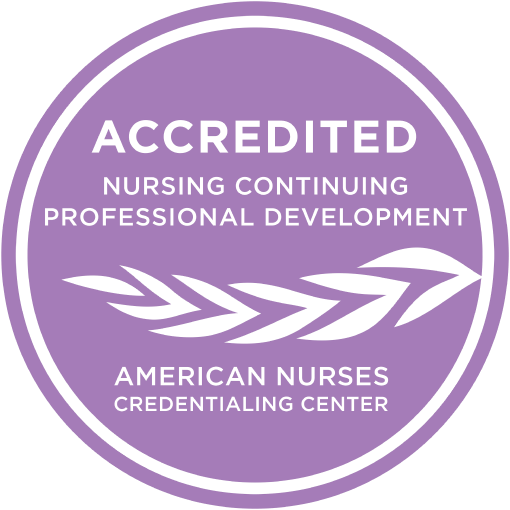Alaska APRN Initial Application Bundle
Contact Hours: 60
Pharmacology Hours: 16
Course Overview
This course bundle will cover various nursing topics, including differential diagnosis and pharmacology, as outlined below. These courses will meet the continuing education requirements for APRNs to obtain their initial APRN licensure and the requirements for prescriptive authority. Upon completion, you will earn 16 pharmacology CE hours.
Course Outline
- LGBTQ+ Cultural Competence
- Polypharmacy Implications in Older Adults
- Diabetic Ketoacidosis Management
- Nutrition for a Healthy Heart
- Adverse Childhood Experiences (ACES)
- Antipsychotic Prescribing
- SSRI Use in Anxiety Disorders
- Anticoagulant Therapy
- SNRIs for Depression
- Corticosteroid Therapy
- Anti-Arrhythmics
- Antibiotic Use in UTI
- Oral STI Medications
- Differential Diagnosis of Depression
- Differential Diagnosis of Pneumonia
- Differential Diagnosis of Hypothyroidism
- Differential Diagnosis of Erectile Dysfunction
- Differential Diagnosis of Chest Pain
- Differential Diagnosis Glaucoma and Cataracts
- Differential Diagnosis – Hepatitis
- Differential Diagnosis Irritable Bowel Syndrome
- Differential Diagnosis of Borderline Personality Disorder
- Differential Diagnosis Parkinson’s Disease
- Differential Diagnosis Epilepsy and Seizures
- Differential Diagnosis of Melanoma
- Differential Diagnosis: Carotid Occlusions and Strokes
- Differential Diagnosis Post-Traumatic Stress Disorder
- Differential Diagnosis: Vertigo and Dizziness
- Differential Diagnosis Anxiety Disorders
Course Outcomes
- Understand the disparities LGBTQ patients face within the healthcare system.
- Summarize at least three strategies to reduce polypharmacy
- Identify risk factors for diabetic ketoacidosis.
- Discuss heart-healthy eating principles, including macronutrient intake, essential vitamins and minerals, fiber, and the importance of limiting saturated fats, trans fats, cholesterol, salt (sodium), processed foods, and added sugars.
- Identify the three main categories of adverse childhood experiences.
- Analyze the pros and cons of prescribing each SSRI.
- Identify potential anticoagulants used to prevent and treat venous thromboembolism.
- Identify the types and uses of Serotonin and Norepinephrine Reuptake Inhibitors (SNRIs).
- Describe the effect that corticosteroids have on the immune system.
- Recognize antiarrhythmic drugs according to the Vaughan-Williams classification system.
- Recognize how antipsychotics affect the brain and central nervous system.
- Differentiate between uncomplicated and complicated UTIs.
- Describe common side effects, including severe possible side effects, of oral medications used to manage sexually transmitted infections (STIs).
- Describe common clinical presentations of depression, including more severe clinical presentations.
- Summarize treatment options for the different types of pneumonia.
- Explain the treatment for hypothyroidism.
- List differential diagnoses of erectile dysfunction.
- Explain the pharmacologic treatment of acute coronary syndromes.
- Describe common clinical presentations of glaucoma and cataracts, including more severe clinical presentations.
- Recognize the global and regional epidemiology of Hepatitis, including prevalence, transmission patterns, high-risk populations, and the impact on public health initiatives, prevention strategies, and healthcare resources.
- Recognize the diagnostic criteria of irritable bowel syndrome.
- Apply assessment and treatment interventions to the client with borderline personality disorder.
- Identify the motor and non-motor symptoms associated with Parkinson’s disease (PD) and describe their underlying pathophysiology.
- Recognize epilepsy-related risks and safety strategies with clients and caregivers, including education on medication adherence, SUDEP prevention, activity restrictions, and psychosocial support.
- Perform an advanced health assessment for suspicious skin lesions.
- Explain the pharmacologic and medical treatment options for stroke and carotid stenosis or occlusion.
- Identify strategies for follow-up and monitoring to evaluate treatment effectiveness and make necessary adjustments for clients with posttraumatic stress disorder.
- Define dizziness and vertigo and differentiate between the two conditions.
- Identify two differential diagnoses of anxiety.
Accreditations and Approvals

- American Nurses Credentialing Center (ANCC) (P0614)
- California Board of Registered Nursing (CEP 17418)
- Kentucky Board of Nursing (7-0090)
- Louisiana State Board of Nursing (58)
- Florida Board of Nursing (50-23983)
- Delaware Board of Nursing (DE-24-010127)
- Alabama Board of Nursing (#ABNP1577)
- Iowa Board of Nursing (#393)
- Kansas Board of Nursing (LT0340-0325)
Approved by the Board of Nursing in every state, you can complete your RN, LVN, and APRN CEUs with confidence.
Accreditation Statement
Nursing CE Central LLC is accredited as a provider of nursing continuing professional development by the American Nurses Credentialing Center's Commission on Accreditation.
It will take the average learner 3600 minutes to complete and awards 60 contact hours of continuing education.
Written For
- Advanced Practice Registered Nurses (APRN)
Requirements for Completion
- Enrollment in the course by the learner
- Read and learn all course materials
- Complete the course evaluation
- Attest and testify learning of the course materials
Disclosure of Relevant Financial Relationships
Nursing CE Central nor any of the authors, planners, content experts, or any contributors have any relevant financial relationships with ineligible companies to disclose.
